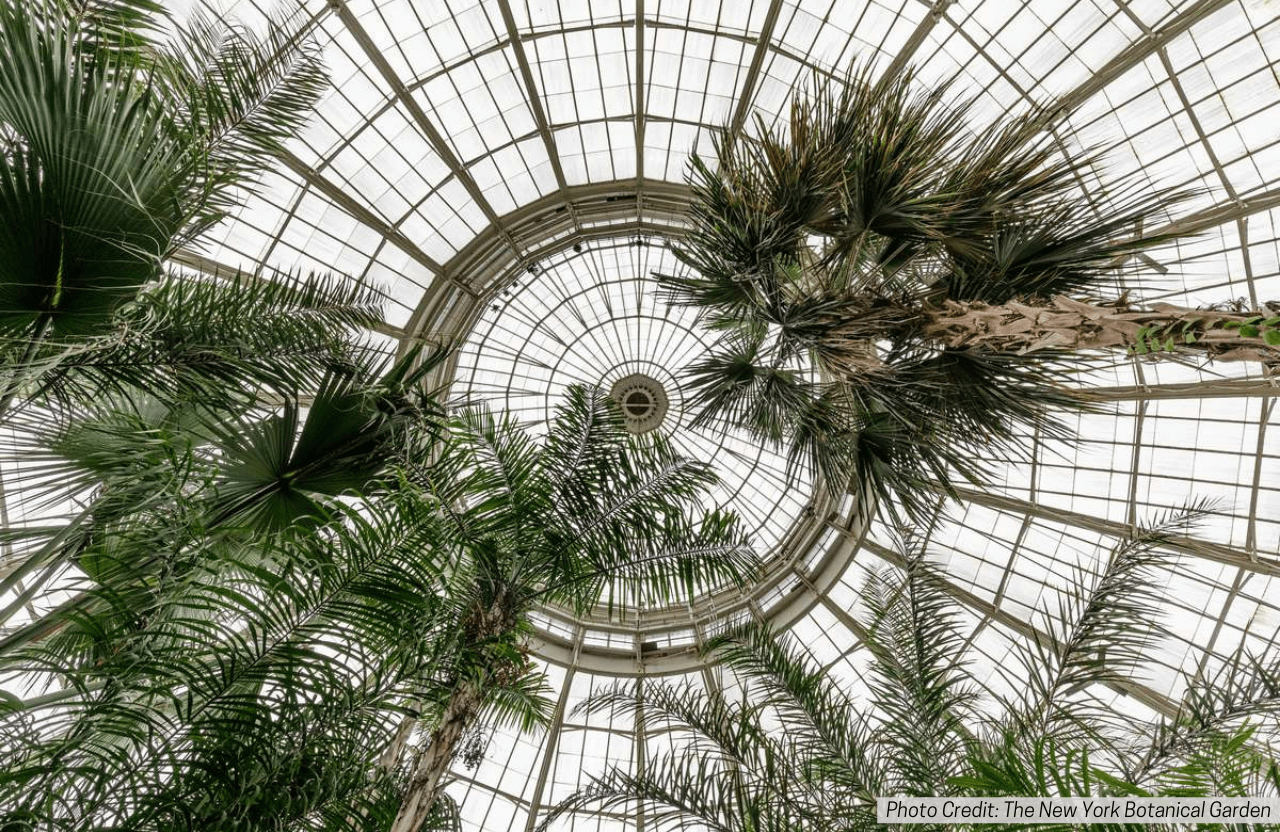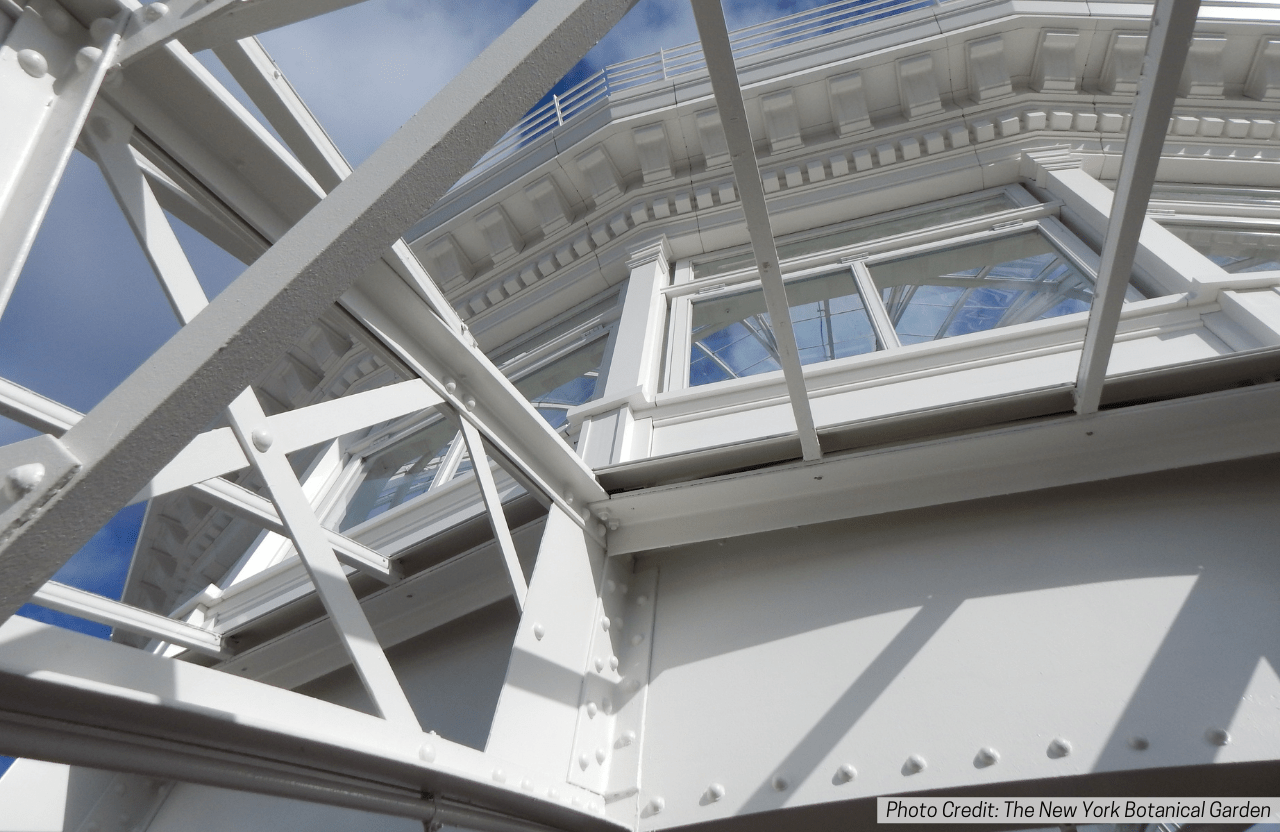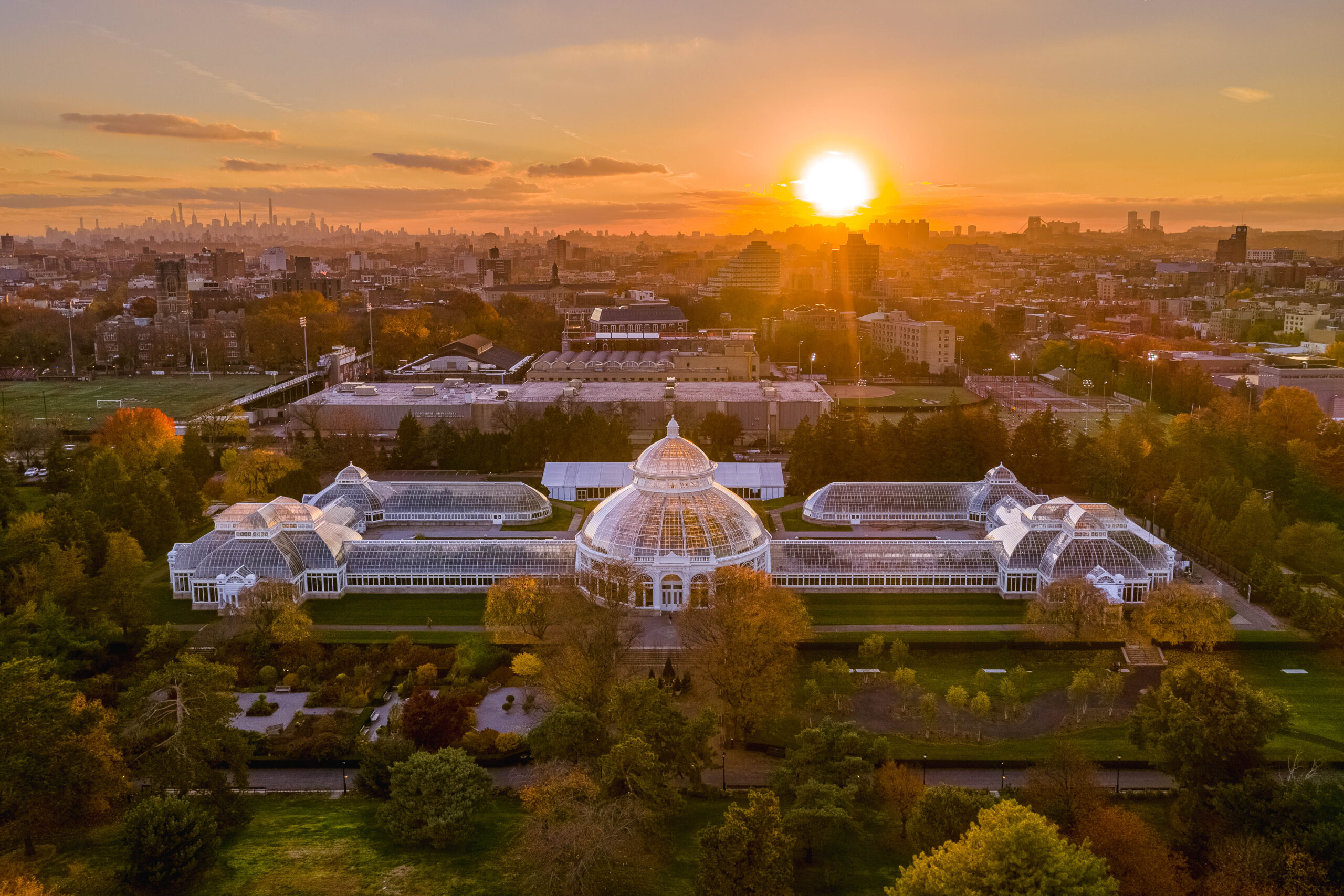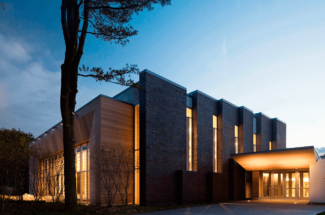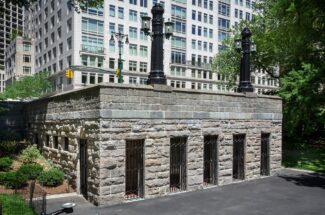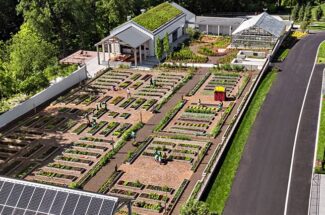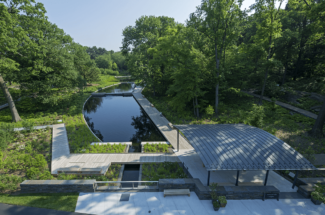The New York Botanical Garden Enid A. Haupt Conservatory Palm Dome Restoration
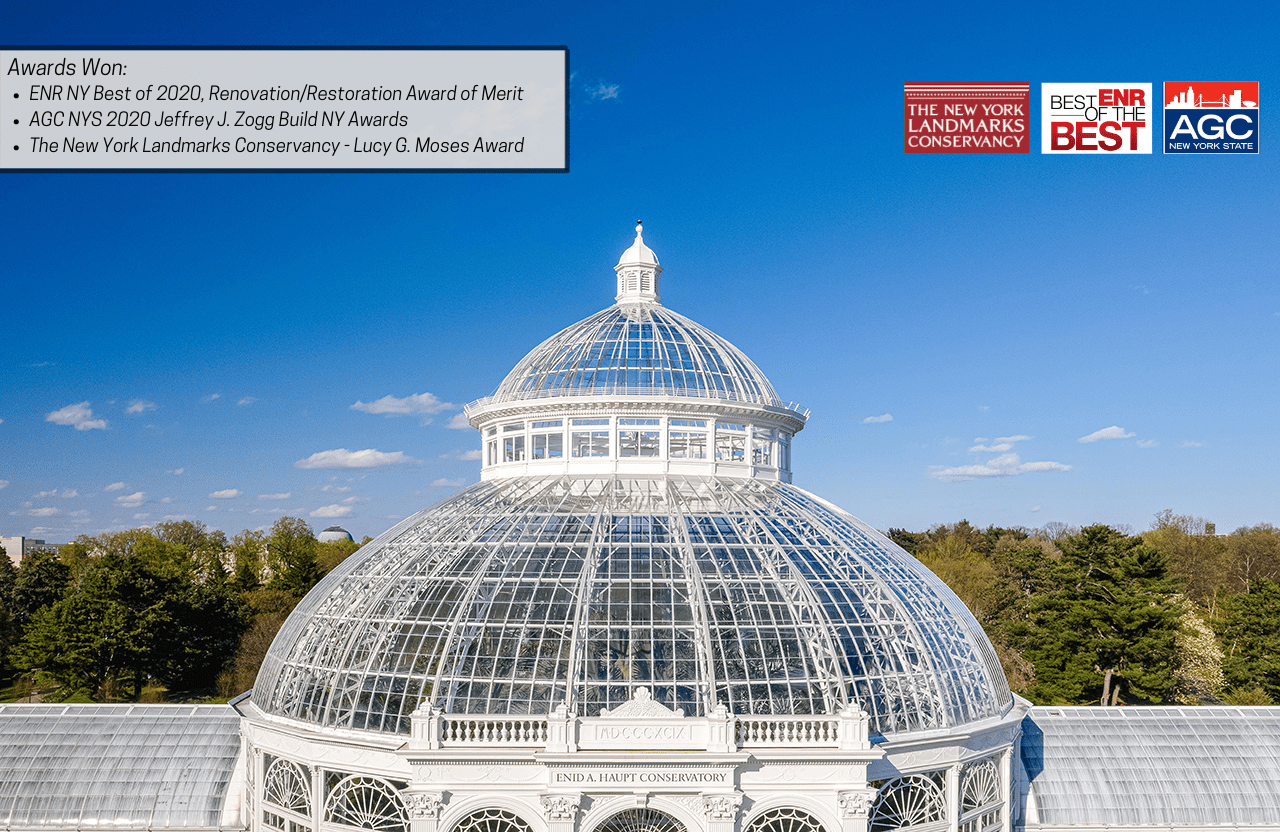
PROJECT DETAILS
The 55,000-square-foot Enid A. Haupt Conservatory, an acre under glass, is one of the nation’s preeminent examples of Victorian-era glasshouses, was designated a New York City Landmark in 1973, and was listed on the National Register of Historic Places since 1967. The Conservatory has undergone renovations throughout its 118-year history, but the current Palm Dome restoration project focused on the central dome atop the Palms of the World Gallery. It comprises the cupola, an upper dome, a drum which includes the compression ring, and a lower dome. Interior scaffolding with a temporary horizontal work surface erected below the dome drum and an enclosed cylinder around the exterior of the drum (including portions of the lower and upper domes) enabled the work to take place efficiently while safeguarding the laborers and plant specimens. The work surface and enclosure acted as a weatherproof barrier ensuring the tropical collection below remained protected and properly climatized throughout the seasonal environmental changes encountered.
Additional building scope included upgrades to the heating system and lighting by using leading-edge materials and technologies, which made the building more energy efficient while also respecting its landmark status. Metal coating system upgrades, reflecting pool waterproofing, paving, planting, and restroom renovations were also included.
IN THE NEWS
View these related articles, which cover specific details about preforming the complex renovations to the Conservatory: NYLC Moses Award, Constructioneer, and Retrofit.
LOCATION:
BRONX, NY
SECTOR:
ARTS & CULTURE
SIZE:
55,000 SQ FT
RESTORATION
The structural restoration of the Palm Dome required overcoming many challenges. The compression ring, the main structural element, was partially accessible during design. Utilizing an aggressive schedule due to limited time allowed for affecting the plant collection, the construction had to be sequenced in a way that allowed for removals and observation of existing conditions to happen concurrently. Additionally, modifications to specified repairs based on on-site conditions needed to be expedited. Actual repairs affected the global stability of the structure and required shoring, which then affected the scaffold footprint and the plantings. Solving all of these constraints required a multi-disciplinary approach of close coordination between owner, designers, and construction from design through construction.
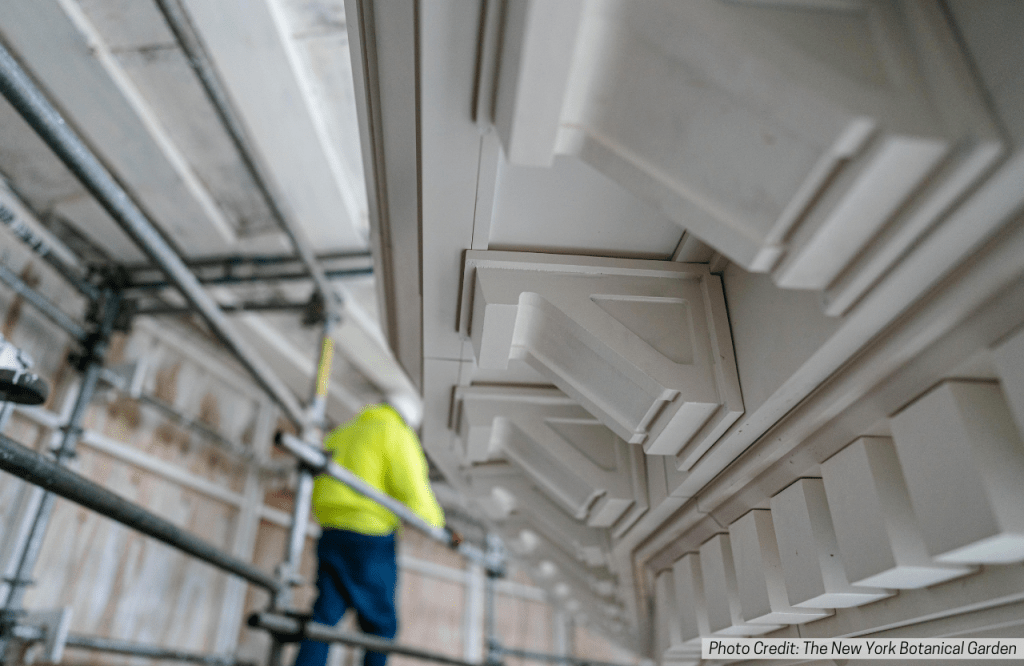

EW Howell Construction Group made an important recommendation early on to change the material used for the new Palm Dome. The painted wood cladding around the drum and the wood cornice—originally constructed with rot-resistant, first-growth bald cypress that is now very rare—was replaced with cast and extruded aluminum components. Not only was this solution very durable and would require much less maintenance, but it would also help preserve these very rare trees from having to be cut down.
